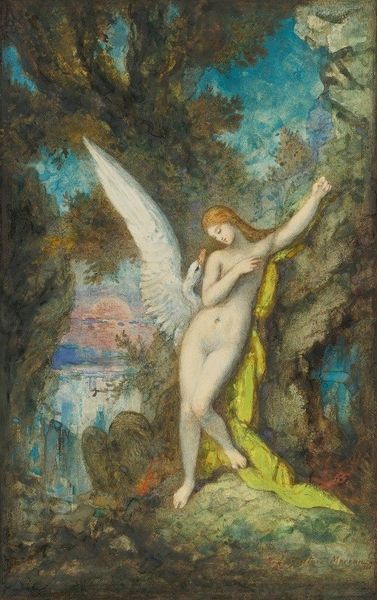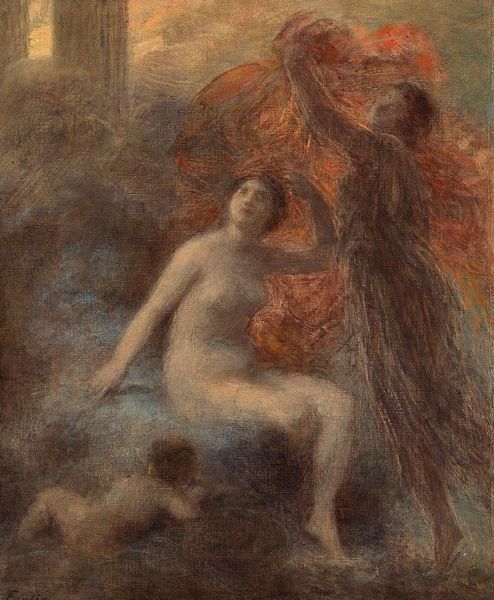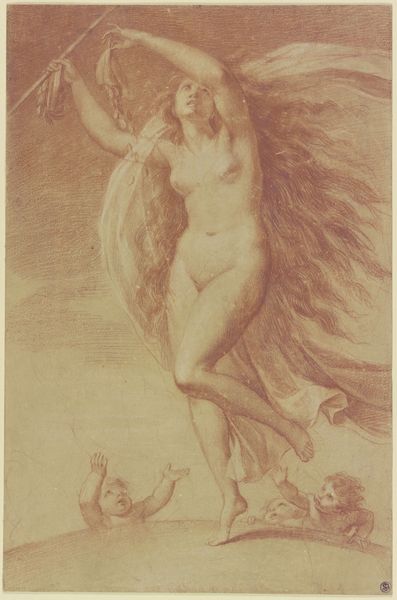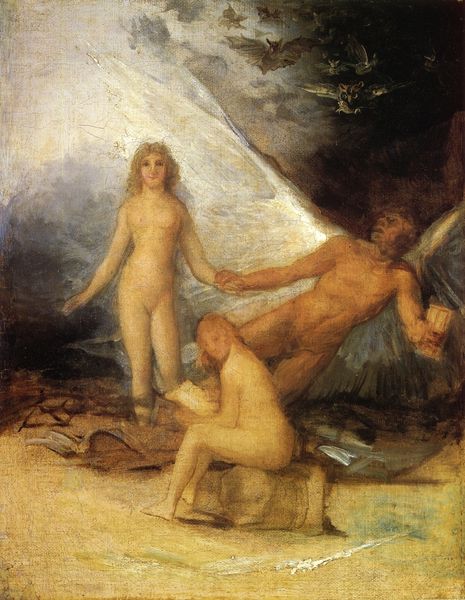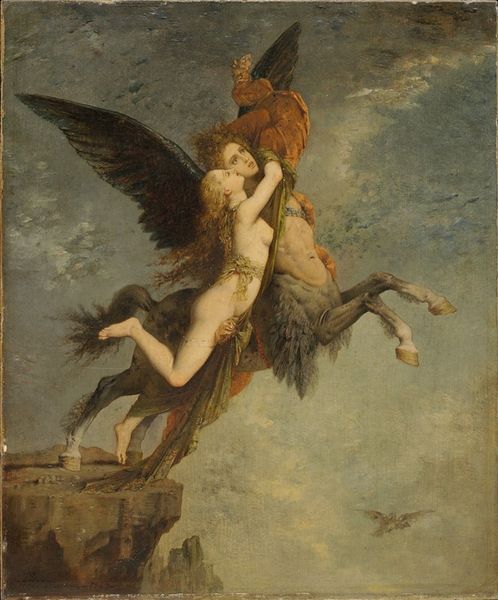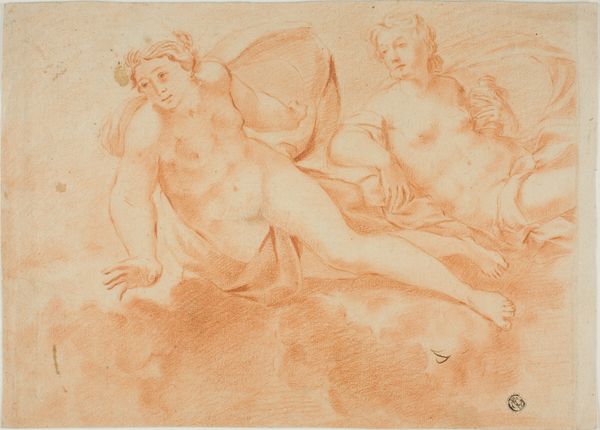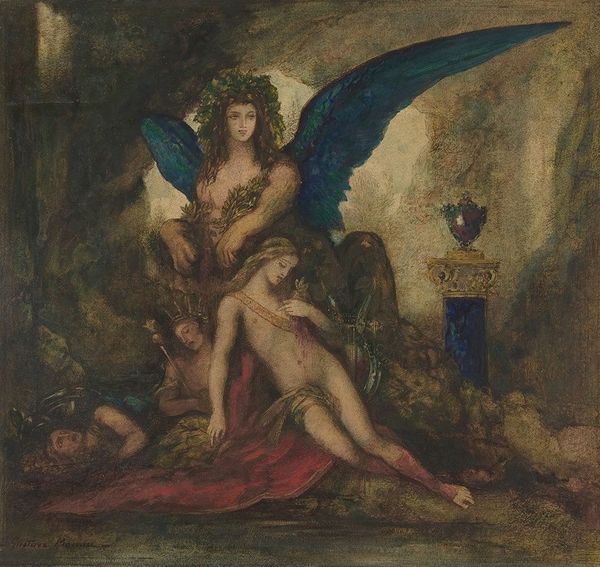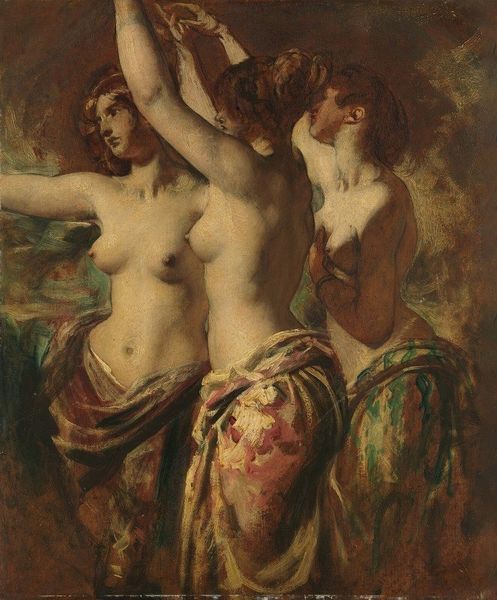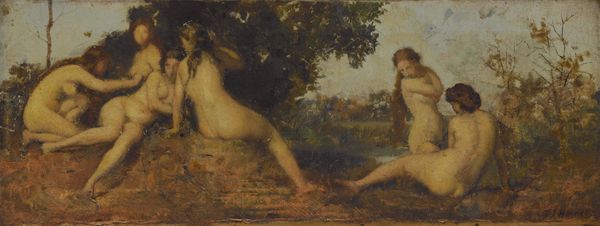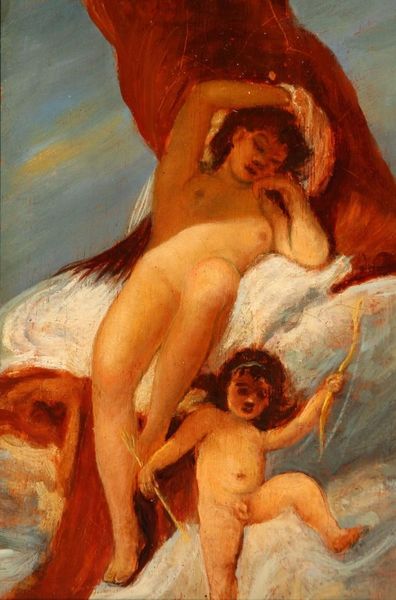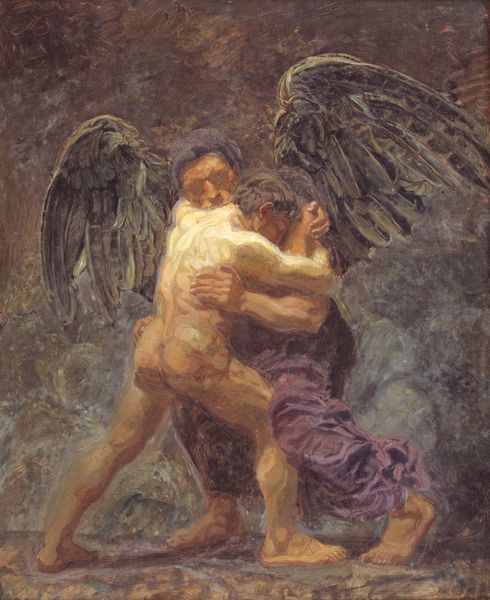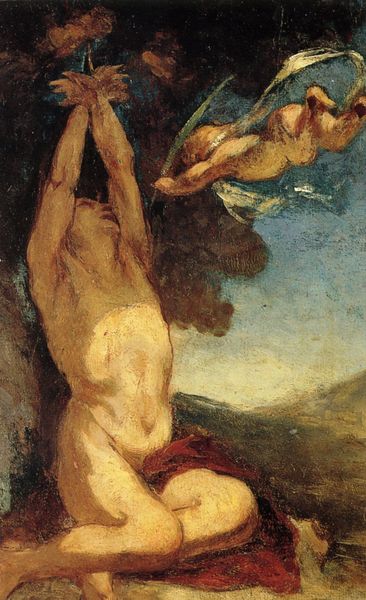
Copyright: Public domain
Editor: This painting, "Amor a Psyché" by Károly Lotz from 1890, uses oil paint to depict a scene of figures embracing in what appears to be the sky. The bodies are rendered with a soft, almost hazy quality. What can you tell me about the making of the piece and its significance? Curator: It’s crucial to examine how Lotz’s method intersects with the broader societal conditions of production at the time. What does the use of oil paint, readily available to the academic artist, reveal? Does its application denote privilege or a certain standardized training accessible within institutions? How might the availability of models to Lotz shape not just the form but also the very content of this erotic and Romantic artwork? Editor: That's interesting, I hadn't considered it from that perspective. I suppose it's easy to get lost in the narrative and overlook the materiality. How does his training fit into the late 19th century's artistic labor market? Curator: Exactly! And considering this 'high art' context: How does the labour involved in producing such a painting – from preparing the canvas to grinding the pigments to its eventual display – compare with labour involved in producing supposedly "lesser" crafts? Is this divergence socially constructed, influencing not just aesthetics but material conditions as well? Editor: It does force you to consider what we value and why, especially as labor practices evolved so dramatically then. Curator: Precisely! It is about linking the image directly back to the realities of production and how value is assigned. This way, we move past admiring "beauty" and engage with its place within the broader historical context of labour. Editor: Thank you. I definitely have a richer understanding of the image now, and I'll remember to always question the circumstances of its creation. Curator: That's the most important thing. Examining art from the standpoint of materials, process and socio-economic context deepens the art historical dialogue.
Comments
No comments
Be the first to comment and join the conversation on the ultimate creative platform.

